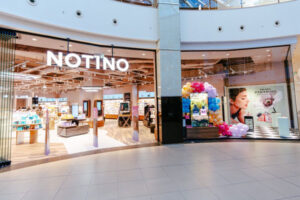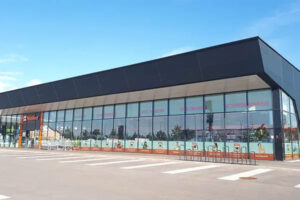By Eleni Polychroniadou
It seems like every week we hear of a new company making a net zero commitment. New research by the Energy and Climate Intelligence Unit (ECIU) and Oxford Net Zero calculates that at least one fifth of the world’s 2,000 largest public companies, representing sales of nearly $14 trillion, now have net zero commitments. However, the ECIU and Oxford Net Zero research also shows less than 50% of organizations have a published plan. Why is that problematic? Because addressing the net zero target has become a “future problem”, less of an immediate action item, and something that is put aside for an unspecified date in the future.
Time is running out to take action. Committing to net zero emissions means committing to changing your business, and this cannot be done overnight. The retail sector needs to act now to show it is committed to a “green recovery” from the pandemic and to demonstrate to customers, supply chains, investors, and other stakeholders that sustainability plays a core role in its business strategy. Pressure will only continue to increase as governments, investors, and consumers demand more action from the retail sector. This trifecta of pressure should serve as motivation to put plans into place. After all, it will soon be legally required. In the European Union, a provisional bill passed at the end of April that started the process of making EU climate efforts legally binding and irreversible. Net zero legislation will dramatically change the market landscape.
Instead of waiting for net zero to become law, the retail sector has an opportunity to enjoy the benefits of being at the forefront of change. Leadership not only strengthens the company’s brand with its customers, but it also allows companies to access new green financing pools that are dedicated to decarbonization. However, lenders and investors will not provide support unless there is a clear plan of action, so where do you start?
Reaching net zero emissions requires careful analysis. You will need to undertake a carbon footprint calculation to see the split between operational emissions and emissions from your supply chain. For some, the supply chain carbon footprint will be higher than the operational emissions, but that does not mean operational emissions (industry jargon: scope 1 and scope 2) should be ignored. If every company focuses on what they control first, they will likely be addressing someone else’s supply chain emissions.
So, what does your own operational carbon footprint look like? One major component will definitely be the buildings you own, operate, and/or lease – the shopping centers, retail units, warehouses, factories, and offices. To reduce the footprint of a portfolio for any such building, you need to evaluate the current stock and understand where your biggest emissions impact is. Then, you need to evaluate the steps required to reach net zero and determine how much they are going to cost. This should begin with measures to reduce the energy demand of buildings to improve their efficiency, then utilizing renewables should be considered, and, finally, moving towards offsetting should be carried out as a last resort.
While it sounds complicated, there are tools in the public domain, such as the EDGE App, which demystify how to get a portfolio of buildings to net zero – and even do initial calculations for free. For companies seeking green finance, certification is required to prove the net zero credentials of the building portfolio, but everyone can start with an action plan. Retail operators such as Lidl Danmark are using EDGE to quantify the performance of the company’s building stock and make progressive improvements for over 100 stores across Denmark.
Technology, legislative pressure, and shopping habits may have changed over the last year, but reducing global greenhouse gas emissions remains a top priority globally. The retail sector has a unique opportunity to adapt to a changing market sooner rather than later, and to integrate net zero into its recovery plans. This can only happen with tangible plans that clearly and transparently show the way forward. It will be an iterative process, but it needs to start today with actions to match ambitions, if we are to stand a chance of making net zero a reality.






